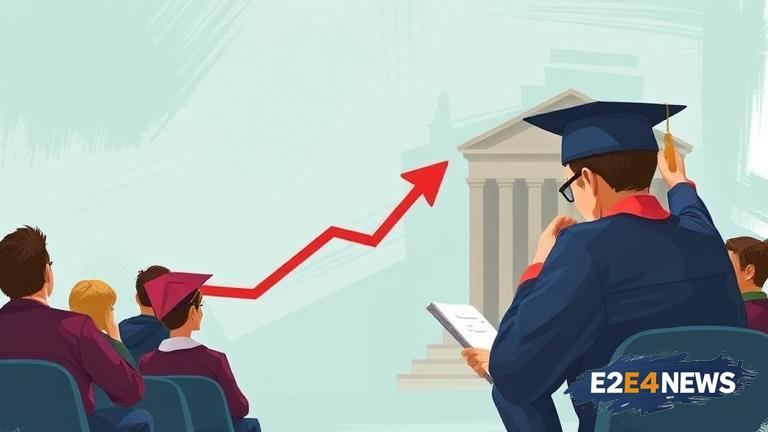The student loan crisis in the United States is expected to worsen, with experts predicting a significant increase in defaults. This comes as no surprise, given the rising cost of higher education and the growing burden of debt on students. According to recent data, outstanding student loan debt has surpassed $1.7 trillion, with the average student graduating with over $30,000 in debt. The economic uncertainty caused by the COVID-19 pandemic has only exacerbated the problem, leaving many students struggling to make ends meet. As a result, experts warn that more students will be forced to default on their loans, which can have serious consequences for their credit scores and financial stability. The situation is particularly dire for low-income students, who often have limited financial resources and are more likely to rely on loans to fund their education. Furthermore, the rising cost of living and stagnant wage growth have made it difficult for students to repay their loans, even after graduating and entering the workforce. The federal government has implemented various measures to help students manage their debt, including income-driven repayment plans and loan forgiveness programs. However, these efforts have been criticized for being inadequate, and many experts argue that more needs to be done to address the root causes of the problem. Some have suggested that the government should consider implementing policies such as free or debt-free college, or increasing funding for programs that help students repay their loans. Others have proposed that lenders should be more flexible with repayment terms and offer more generous forgiveness options. Despite these efforts, the student loan crisis is likely to continue, with serious consequences for the economy and society as a whole. The impact of rising defaults will be felt not only by individual students but also by the broader economy, as defaults can lead to a decrease in consumer spending and an increase in debt collection activities. Moreover, the crisis has significant implications for social mobility, as students from low-income backgrounds are disproportionately affected and may be less likely to pursue higher education due to the fear of debt. In addition, the mental health impacts of debt should not be overlooked, as the stress and anxiety caused by debt can have serious consequences for students’ well-being. As the situation continues to deteriorate, it is essential that policymakers and stakeholders take immediate action to address the crisis and find solutions that work for all students, regardless of their background or financial situation. The need for a comprehensive and sustainable solution has never been more pressing, and it is crucial that we prioritize the needs of students and work towards creating a more equitable and affordable higher education system.
